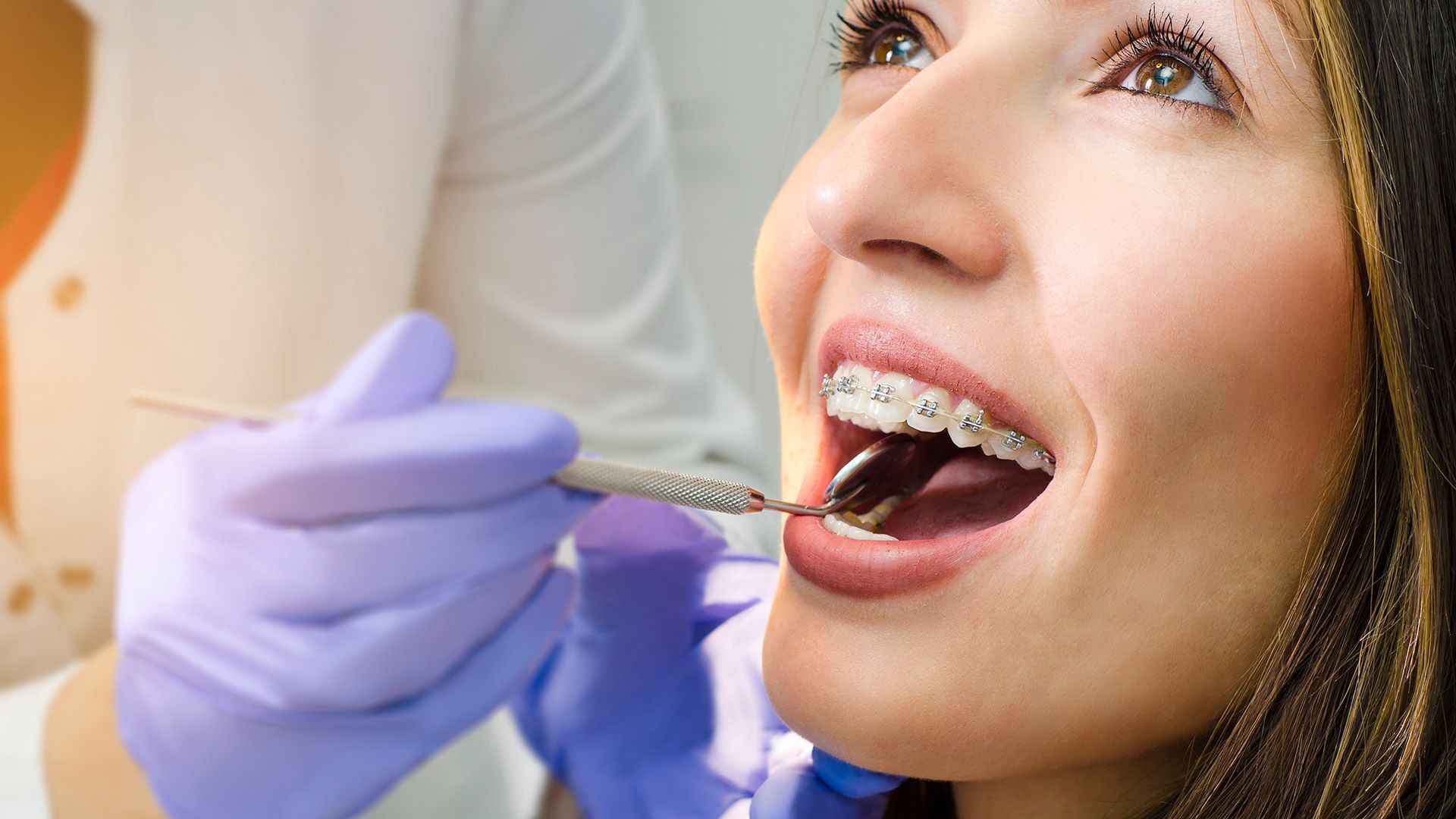Orthodontic Braces: A Complete Guide
Orthodontic braces are a popular and effective solution for correcting misaligned teeth and jaws, helping you achieve the smile you've always wanted. Whether you're considering braces for yourself or your child, understanding the types, benefits, and care required can make the process smoother. In this comprehensive guide, we will explore the various types of orthodontic braces available, how they work, and what to expect during the braces journey. Join us as we delve into the world of orthodontic braces and discover how they can transform your smile.

Overview of Orthodontic Braces
Orthodontic braces are dental devices designed to correct misaligned teeth and jaws, improving both functionality and aesthetics. They consist of brackets, wires, and bands that work together to gradually shift teeth into their desired positions over time. By applying gentle pressure, orthodontic braces align the teeth and improve the bite, contributing to overall oral health.
The purpose of orthodontic braces extends beyond mere appearance; they play a crucial role in promoting optimal dental function. Properly aligned teeth make it easier to chew, speak, and maintain oral hygiene, as they reduce the risk of cavities and gum disease. The importance of wearing braces cannot be overstated, as they can significantly enhance a person's quality of life and boost self-confidence.
Despite their benefits, there are several common misconceptions about orthodontic braces that can lead to misunderstanding. One prevalent myth is that braces are only for children and teenagers; however, adults can also benefit from orthodontic treatment. Additionally, some believe that braces are purely cosmetic, while in reality, they address serious dental issues that can impact health. Another misconception is that braces are always painful. While some discomfort may be experienced during adjustments, modern orthodontic braces are designed to be more comfortable than ever. By understanding the true nature of orthodontic braces, individuals can make informed decisions about their orthodontic treatment.
Types of Orthodontic Braces
Orthodontic braces are essential tools for achieving a straight and healthy smile. They come in various types, each with its unique benefits and features. Understanding these options can help you make an informed decision about your orthodontic treatment.
Metal braces are the most traditional and widely recognized type of orthodontic braces. Made from high-grade stainless steel, these braces consist of brackets and wires that work together to move teeth into their desired positions. Known for their durability and effectiveness, metal braces are often the most affordable option, making them a popular choice among patients of all ages.
Ceramic braces offer a more discreet alternative to metal braces. They are made from clear or tooth-colored materials, allowing them to blend in with your natural teeth. Ceramic braces function similarly to metal braces but are less noticeable, making them an attractive option for those who want to maintain a more subtle appearance during treatment. However, they may require more maintenance and can be slightly more expensive.
Clear aligners represent a modern approach to orthodontic treatment. These custom-made, removable aligners are designed to gradually shift your teeth into place without the use of brackets or wires. Clear aligners are particularly popular among adults and teens who prefer a virtually invisible solution. They offer the added convenience of being removable for eating and cleaning, making oral hygiene easier throughout the treatment process.
Choosing the right type of orthodontic braces is crucial for your comfort and treatment success. At Orthodontics, we are committed to helping you find the best option tailored to your specific needs.
How Do Orthodontic Braces Work?
Orthodontic braces are a sophisticated solution designed to correct misaligned teeth and jaws. The mechanics of tooth movement involve applying gentle pressure to the teeth over time, which encourages them to shift into their desired positions. This process relies on the principle of bone remodeling, where the bone surrounding the teeth adapts to the new positioning, allowing for effective alignment.
Central to the functionality of orthodontic braces are the brackets, wires, and bands. Brackets are small attachments that are bonded to each tooth and serve as anchors for the archwire. The archwire is a thin metal wire that connects all the brackets and applies consistent pressure on the teeth. Bands, which are elastic or metal rings, are used to secure the brackets and can also provide additional anchorage for certain types of movement. Together, these components work in harmony to guide the teeth into proper alignment.
Treatment planning is a crucial aspect of the orthodontic process. Before beginning treatment, an orthodontist will develop a personalized plan based on individual needs, which may include X-rays and digital scans of the teeth. Following the initial placement of orthodontic braces, regular adjustment appointments are scheduled to ensure progress is made. During these visits, the orthodontist will tighten or change the archwires and may swap out rubber bands to continue guiding the teeth effectively. This adjustment schedule is essential for achieving optimal results and is tailored to each patient's unique treatment timeline.
Benefits and Risks of Orthodontic Braces
Orthodontic braces offer numerous advantages, particularly when it comes to aligning teeth. One of the primary benefits is their ability to correct misalignments, which can enhance both the aesthetics of a smile and functional capabilities like biting and chewing. By gradually shifting teeth into their proper positions, orthodontic braces can significantly improve overall dental health, leading to a more confident smile.
However, it’s important to consider the potential risks and side effects associated with orthodontic braces. Common issues may include discomfort or soreness in the initial stages after adjustments, as well as the possibility of developing cavities if proper oral hygiene is not maintained. Some patients may also experience temporary changes in speech, particularly during the first few weeks of wearing braces.
Despite these potential drawbacks, the long-term benefits of orthodontic braces are substantial. Properly aligned teeth reduce the risk of gum disease, tooth decay, and abnormal wear on the enamel. This not only contributes to better oral health but can also prevent more extensive and costly dental procedures in the future. By investing in orthodontic treatment, patients often enjoy a lifetime of benefits, including improved self-esteem and a healthier mouth.
What to Expect During the Braces Process
Embarking on your journey with orthodontic braces begins with an initial consultation and assessment at Baptiste Orthodontics. During this visit, our experienced orthodontist will evaluate your dental health, discuss your concerns, and determine the best course of action for your unique smile. This assessment typically includes X-rays, photographs, and a thorough examination of your teeth and jaws. We take the time to answer all your questions, ensuring you feel confident and informed as you move forward.
Once you decide to proceed, the fitting procedure is the next step. This appointment usually lasts about one to two hours, during which the orthodontist will apply the orthodontic braces to your teeth. You can expect some pressure and minor discomfort as the braces are placed, but this is normal and temporary. We recommend setting aside time for this appointment, as it is crucial for starting your treatment plan. After fitting, our team will provide you with detailed instructions on how to care for your orthodontic braces, including dietary recommendations and oral hygiene tips to maintain your dental health.
The duration of treatment with orthodontic braces varies depending on the complexity of your case, but most patients can expect to wear their braces for about 18 to 24 months. Regular check-ups every 4 to 8 weeks will help us monitor your progress and make any necessary adjustments. With patience and adherence to our guidelines, you’ll be well on your way to achieving the beautiful smile you’ve always wanted.
Care and Maintenance of Braces
Maintaining proper oral hygiene is crucial for anyone wearing orthodontic braces. Braces can trap food particles and plaque, making it essential to brush your teeth at least twice a day and floss daily. A soft-bristled toothbrush and fluoride toothpaste are recommended to effectively clean around the brackets and wires. Additionally, consider using an interdental brush or floss threader to reach those tricky areas that regular brushing might miss.
While wearing orthodontic braces, it's also important to be mindful of the foods you consume. Certain foods can damage braces or get stuck in them, leading to discomfort or potential delays in your treatment. Avoid hard foods like nuts and hard candies, sticky foods such as caramel and chewing gum, and crunchy vegetables like raw carrots. Opt for softer foods that are easier to chew and won't pose a risk to your orthodontic braces.
Regular check-ups and adjustments with your orthodontist are vital for the success of your treatment. These appointments allow your orthodontist to monitor your progress, make necessary adjustments to your braces, and address any concerns you may have. Typically, check-ups are scheduled every 4 to 6 weeks, ensuring that your orthodontic braces are working effectively to achieve the desired results in a timely manner. Remember, consistent care and regular visits will help you achieve a beautiful, healthy smile with your orthodontic braces.












